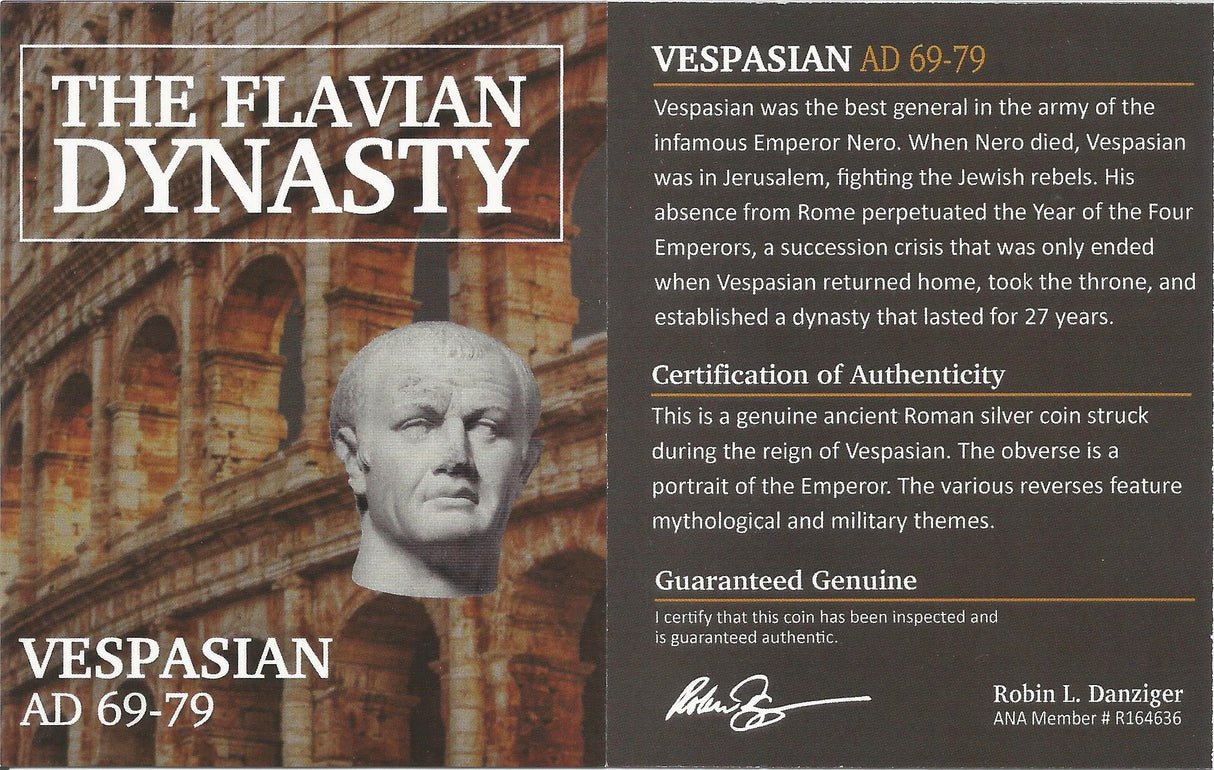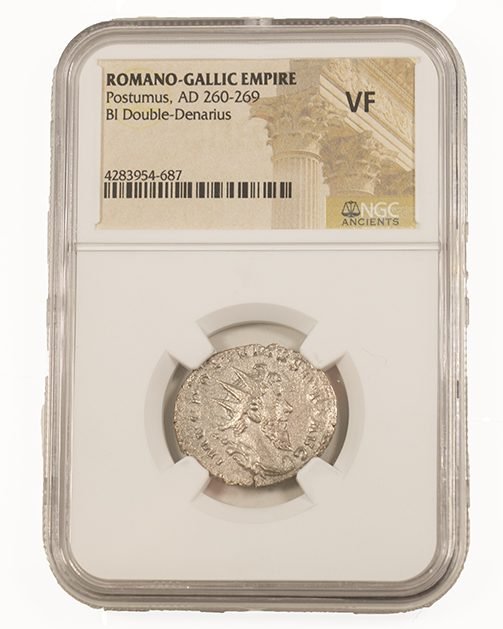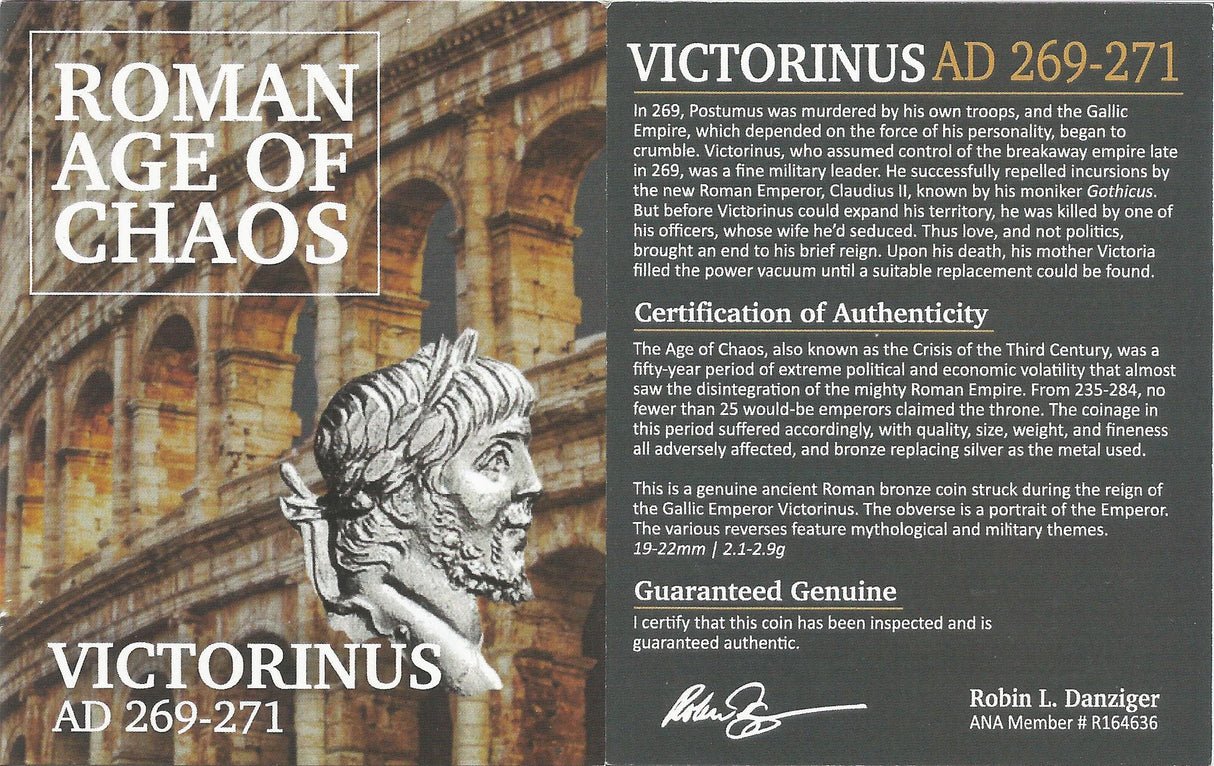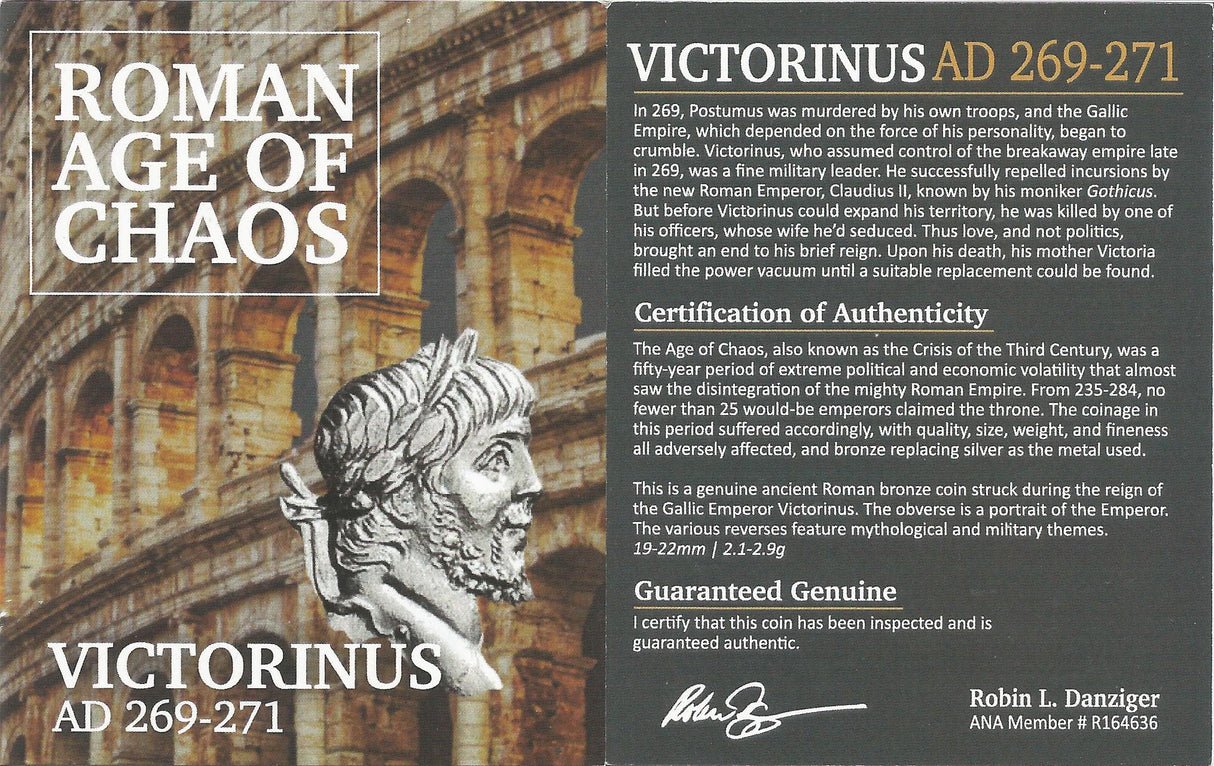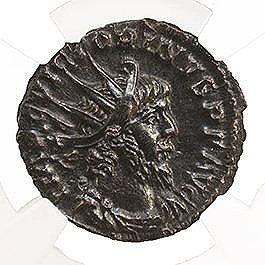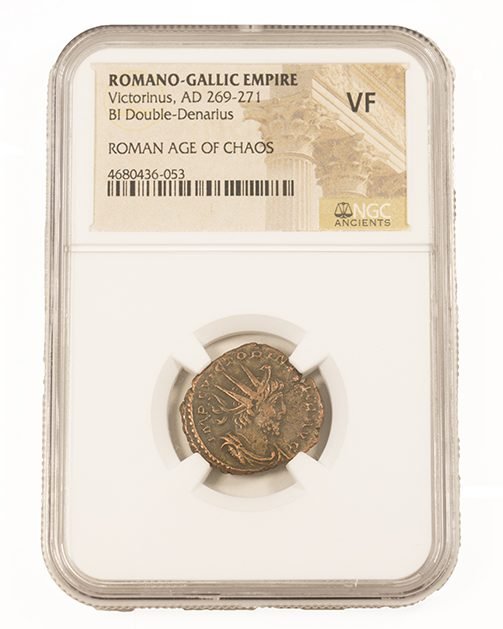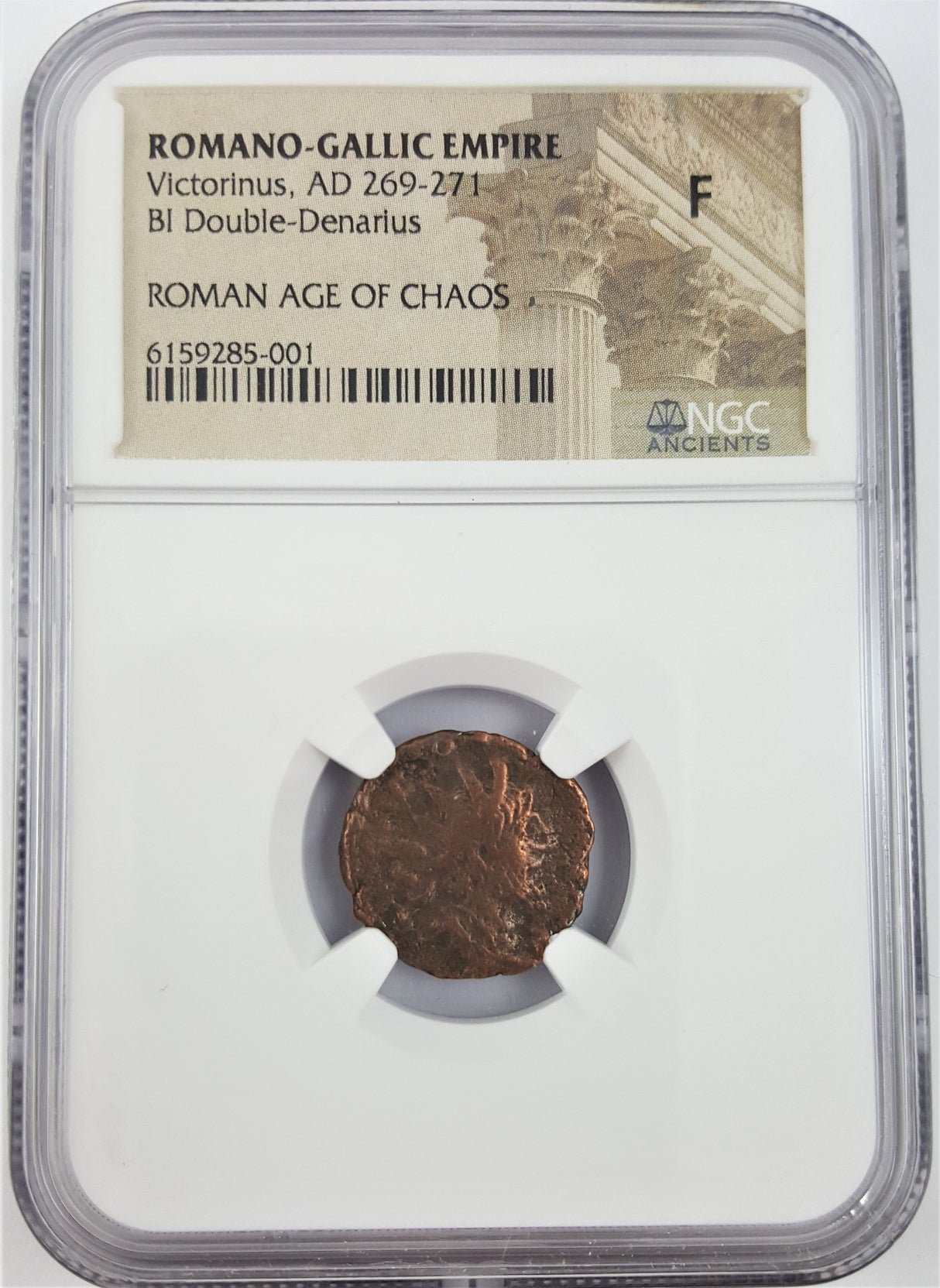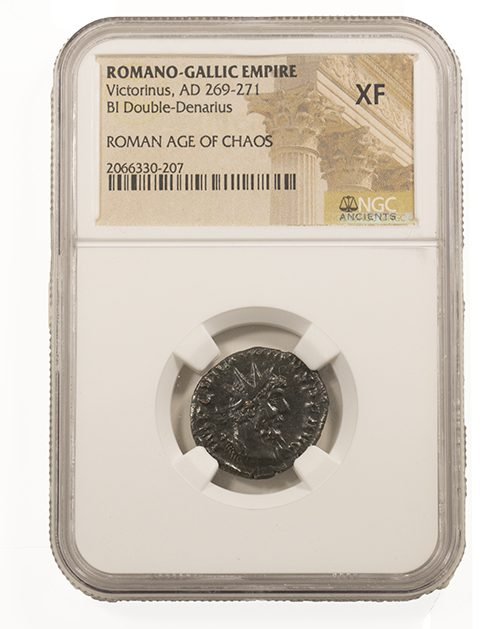 Image 1 of 4
Image 1 of 4

 Image 2 of 4
Image 2 of 4

 Image 3 of 4
Image 3 of 4

 Image 4 of 4
Image 4 of 4





Roman Bronze Coin of Constantius II with Fallen Horseman Design (about 1,675-1,700 years ago)
This bronze coin featuring a distinctive "fallen horseman" design was issued during the reign of Emperor Constantius II, who ruled portions of the Roman Empire between 337 and 361 CE. The reverse imagery depicting a Roman soldier spearing a fallen barbarian cavalryman represents one of the most recognizable and popular military-themed designs in late Roman coinage.
Coin Description:
Front side: Portrait of Emperor Constantius II facing right, wearing a pearl diadem and imperial robes, with his name and titles in Latin around the edge.
Back side: Dynamic scene of a Roman soldier spearing a fallen barbarian horseman, with a design commonly referred to as the "fallen horseman" or "gladiator" type, though it actually depicts a battlefield scene rather than arena combat.
Technical Details:
Bronze alloy composition
Denomination: Likely an AE2 or AE3
Weight: Approximately 2-4 grams
Diameter: Approximately 18-22 mm
NGC Certified for authentication and preservation
Minted between approximately 348-361 CE
Condition as specified by NGC certification
Historical Significance: Despite its popular nickname as the "gladiator reverse," this coin design actually commemorates Roman military victories against barbarian cavalry forces, particularly the Sarmatians and other frontier tribes. Constantius II, son of Constantine the Great, was known for his campaigns along the empire's borders, particularly against Persian and Germanic threats. The fallen horseman imagery was powerful propaganda, emphasizing Roman military prowess during a period when mounted nomadic warriors increasingly threatened imperial frontiers. While gladiatorial combat was indeed an important aspect of Roman culture (lasting until its official abolition in 404 CE), this particular coin design celebrates battlefield victories rather than arena combat, demonstrating how imperial coinage effectively communicated military achievements to a population spread across a vast empire.
This bronze coin featuring a distinctive "fallen horseman" design was issued during the reign of Emperor Constantius II, who ruled portions of the Roman Empire between 337 and 361 CE. The reverse imagery depicting a Roman soldier spearing a fallen barbarian cavalryman represents one of the most recognizable and popular military-themed designs in late Roman coinage.
Coin Description:
Front side: Portrait of Emperor Constantius II facing right, wearing a pearl diadem and imperial robes, with his name and titles in Latin around the edge.
Back side: Dynamic scene of a Roman soldier spearing a fallen barbarian horseman, with a design commonly referred to as the "fallen horseman" or "gladiator" type, though it actually depicts a battlefield scene rather than arena combat.
Technical Details:
Bronze alloy composition
Denomination: Likely an AE2 or AE3
Weight: Approximately 2-4 grams
Diameter: Approximately 18-22 mm
NGC Certified for authentication and preservation
Minted between approximately 348-361 CE
Condition as specified by NGC certification
Historical Significance: Despite its popular nickname as the "gladiator reverse," this coin design actually commemorates Roman military victories against barbarian cavalry forces, particularly the Sarmatians and other frontier tribes. Constantius II, son of Constantine the Great, was known for his campaigns along the empire's borders, particularly against Persian and Germanic threats. The fallen horseman imagery was powerful propaganda, emphasizing Roman military prowess during a period when mounted nomadic warriors increasingly threatened imperial frontiers. While gladiatorial combat was indeed an important aspect of Roman culture (lasting until its official abolition in 404 CE), this particular coin design celebrates battlefield victories rather than arena combat, demonstrating how imperial coinage effectively communicated military achievements to a population spread across a vast empire.
This bronze coin featuring a distinctive "fallen horseman" design was issued during the reign of Emperor Constantius II, who ruled portions of the Roman Empire between 337 and 361 CE. The reverse imagery depicting a Roman soldier spearing a fallen barbarian cavalryman represents one of the most recognizable and popular military-themed designs in late Roman coinage.
Coin Description:
Front side: Portrait of Emperor Constantius II facing right, wearing a pearl diadem and imperial robes, with his name and titles in Latin around the edge.
Back side: Dynamic scene of a Roman soldier spearing a fallen barbarian horseman, with a design commonly referred to as the "fallen horseman" or "gladiator" type, though it actually depicts a battlefield scene rather than arena combat.
Technical Details:
Bronze alloy composition
Denomination: Likely an AE2 or AE3
Weight: Approximately 2-4 grams
Diameter: Approximately 18-22 mm
NGC Certified for authentication and preservation
Minted between approximately 348-361 CE
Condition as specified by NGC certification
Historical Significance: Despite its popular nickname as the "gladiator reverse," this coin design actually commemorates Roman military victories against barbarian cavalry forces, particularly the Sarmatians and other frontier tribes. Constantius II, son of Constantine the Great, was known for his campaigns along the empire's borders, particularly against Persian and Germanic threats. The fallen horseman imagery was powerful propaganda, emphasizing Roman military prowess during a period when mounted nomadic warriors increasingly threatened imperial frontiers. While gladiatorial combat was indeed an important aspect of Roman culture (lasting until its official abolition in 404 CE), this particular coin design celebrates battlefield victories rather than arena combat, demonstrating how imperial coinage effectively communicated military achievements to a population spread across a vast empire.
Constantius II (Latin: Flavius Julius Constantius; Ancient Greek: Κωνστάντιος, romanized: Kōnstántios; 7 August 317 – 3 November 361) was Roman emperor from 337 to 361. His reign saw constant warfare on the borders against the Sasanian Empire and Germanic peoples, while internally the Roman Empire went through repeated civil wars, court intrigues, and usurpations. His religious policies inflamed domestic conflicts that would continue after his death.
Constantius was a son of Constantine the Great, who elevated him to the imperial rank of Caesar on 8 November 324 and after whose death Constantius became Augustus together with his brothers, Constantine II and Constans on 9 September 337. He promptly oversaw the massacre of his father-in-law, an uncle, and several cousins, consolidating his hold on power. The brothers divided the empire among themselves, with Constantius receiving Greece, Thrace, the Asian provinces, and Egypt in the east. For the following decade a costly and inconclusive war against Persia took most of Constantius's time and attention. In the meantime, his brothers Constantine and Constans warred over the western provinces of the empire, leaving the former dead in 340 and the latter as sole ruler of the west. The two remaining brothers maintained an uneasy peace with each other until, in 350, Constans was overthrown and assassinated by the usurper Magnentius.























